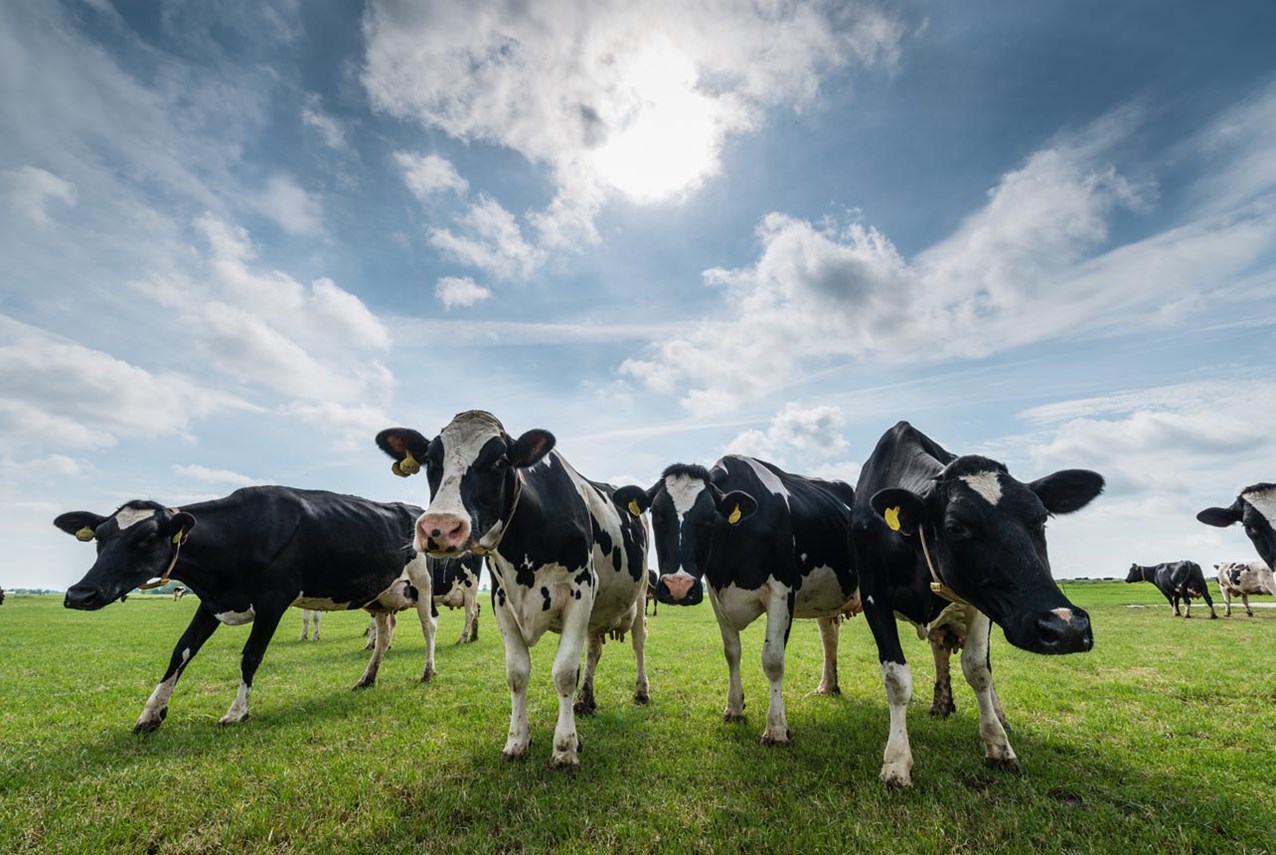By 2050 the global population will have grown to 9.8 billion people. Producing enough safe, healthy, and affordable food for this growing population will lead to a 56 percent increase in the global demand for food and an increase of nearly 70 percent for animal-based foods.
Climate change
At the same time climate change is becoming one of the biggest issues associated with livestock production. The livestock production chains that we are a part of are responsible for 14,5 percent of the global emissions of greenhouse gases (GHG). Ruminants account for 80 percent of the total GHG emissions associated with livestock production. The Carbon Footprint (CFP) of a product depicts the number of CO2-equivalents that are emitted per kg of product produced (meat, fish, dairy and eggs), considering all stages of production, based on a Life Cycle Analysis (LCA).
Reduction of CO2-equivalents
Pressure to reduce the emission of GHG and the CFP of livestock production is rising. Fuelled by the Paris Agreement, a legally binding international treaty on climate change, most countries have adopted the goal to limit global warming to well below 2, preferably to 1.5 degrees Celsius. To achieve this long-term temperature goal, countries aim to reach global peaking of greenhouse gas emissions as soon as possible to achieve a climate neutral world by mid-century. To reach the ambitions laid down in the Paris Agreement many countries are working on policies that aim to lower the amount of GHG emitted by different economic sectors – the most popular method to achieve this goal seems to be the reduction of CO2-equivalents.
Reducing our CFP
Given the fact that the production of livestock is responsible for a significant part of global GHG emissions we expect that our supply chain partners, governments and NGO’s will ask us to decrease the footprint of our products – by changing some of the raw materials we use, source locally where possible, increase the use of by products and make our production and logistical process more efficient where possible – and introduce technical solutions – in the form of additives – that further reduce the emission of GHG on the farm when they become available. We believe that it is important to be able to meet the demands of our supply chain partners when it comes to reducing our CFP.



